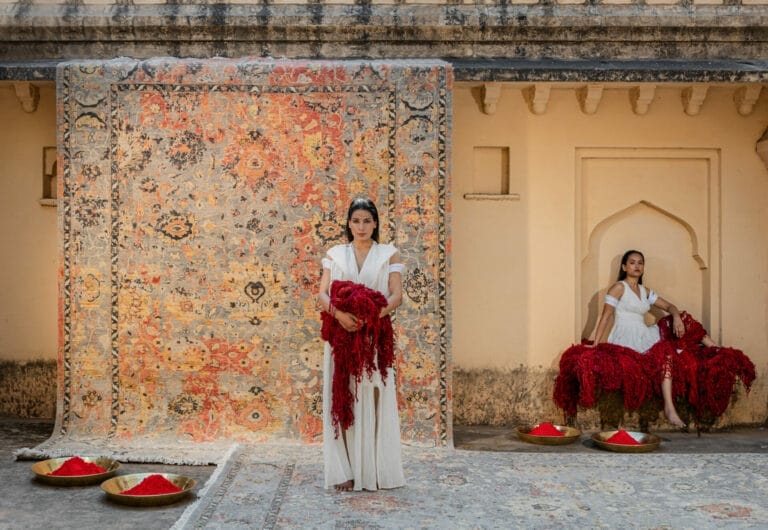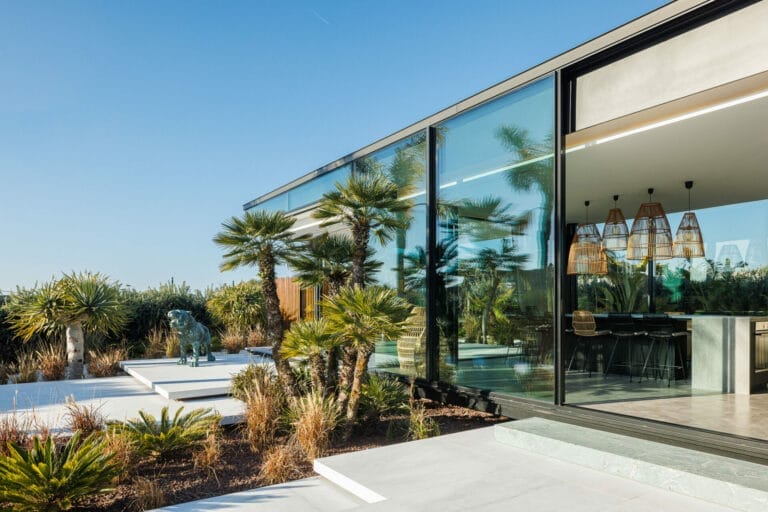Throughout history, Japan has sparked worldwide curiosity. Japanese architecture has piqued global curiosity due to its strict respect for the local context and meticulous attention to detail.

The country has long captivated curiosity, from its closed-door policy in the Middle Ages and the enchanting cherry blossom season to its interesting life ideologies and technical accomplishments. But if there is anything more appealing about the nation, it is undoubtedly its architectural splendor.

The Japanese have long used the modern notion of modular design in buildings to fit their way of life. While the usage of materials and patterns appears to have developed throughout time, the bottom line—to be in harmony with the environment—remains the same. Japanese architecture is simple and efficient, with a basic dedication to local, ecological construction processes. It is worth taking inspiration from.

Evaluation of Japanese architecture
Traditional Japanese buildings, influenced by a variety of developing techniques, originated in the dwellings of influential farmers during the early Edo Period (1603–1868). They were constructed using tools and methods brought from Korea and China. In reaction to the country’s environment and as a means of calamity governance, the Japanese gradually strengthened a regional character in their buildings. Although heavily influenced by Chinese architecture, the distinctions between the two are noticeable.

The primary feature distinguishing Japanese architecture is its desire to be in balance with the environment. Unlike the Chinese, who use paint to finish their wooden constructions, the Japanese do not paint their dwellings to express gratitude. Their minimalist usage of materials like wood and others in fundamental form reflects their worldview. Even now, to create modern and ecological designs, the Japanese prefer to work in sync with their organic environments rather than controlling them.


Japanese architecture
As historian Daniel Boorstin correctly points out, “While Western architects would battle the elements, the Japanese, admiring their power, have sought ways to exploit their charms.”

As previously said, Japanese culture has a natural love for the environment, innovative thinking, generosity, and equity, which pervade every facet of their way of life. As a result, Japanese architecture emphasizes materiality, authenticity, and simplicity in their purest form. Traditional Japanese architecture is distinguished by its minimalist design, minimal building methods, use of lightweight materials (such as wood, bamboo, straw, and paper), and permeable interior-exterior divisions.

Timeline of Japanese Architecture
Distinguished times in history brought distinct features from various architectural methods. Buddhism was imported to Japan from China during the Asuka era (593-710) and, as a result, Buddhist architecture had a significant impact on Japanese architecture. Then, during the Nara era (710–794), many temples and royal buildings were created in the Tang style of China.

During the Heian period (794-1185), the nobility’s dwellings were constructed in shinden-zukuri (sleeping hall) design, with the main building and sleeping spaces in the middle and connected to other surrounding apartments by hallways. It was during this time that a completely integrated and national style emerged.

Japan’s modern period is regarded as commencing with the Meiji Restoration in 1868 and enduring to the present. Japanese architecture built in the final quarter of the nineteenth century is notable for its quick absorption of Western architectural forms and the structural technology required to attain outcomes that are new to traditional Japanese perceptions.

Large-scale governmental and public structures were no longer made of wood but rather of reinforced brick, occasionally coated with stone in European designs. Steel-reinforced concrete was adopted during the Taishō period, resulting in bigger interior areas.
While postwar architecture is broadly varied and global in scope, its most spectacular overcomes have been contemporary adaptations of traditional forms. Tange Kenzō’s constructions for the 1964 Tokyo Olympics combine early agricultural and Shintō architectural elements with a modern abstract element. Andō Tadao’s (born 1941) residential and institutional designs use natural materials and carefully integrate the structure with nature. In general, Japanese architects in the twentieth century were well-versed in Western designs and actively worked to build a relevant contemporary style suitable for Japanese locations.
Here are 2 examples of Japanese architecture:
Kengo Kuma’s National Stadium, Tokyo
Architects: Azusa Sekkei, Kengo Kuma & Associates, Taisei Corporation
Area: 192000 m2
Year: 2019

Stadium with Japanese-ness, merging nicely with the related Meiji Shrine woodland The facade of the new National Stadium incorporates Japanese elements with stacked “eaves.” (overhangs). Eaves are a classic Japanese architectural feature that is deeply rooted in the Japanese environment. They help to create environmentally responsible designs by hiding sunlight and providing a refreshing wind on the stands.

In addition, for integration with the lush vegetation of the Meiji Shrine’s Outer Garden, the stadium’s height is reduced, and the eaves are planted with native species. The broad, flat roof is cantilevered, with frameworks around 60 meters long constructed of local wood and steel. This world-class stadium brings together Japanese heritage, climate, and technology.

“Kaze no Obisashi (grand eaves of the wind)” enhances the thermal climate of the stands and pitch by successfully bringing in the seasonal breeze while eliminating heat and humidity from within the stadium through the top. The spacing (opening ratio) between the lattices on the eaves changes with the orientation of the structure. The south-southeast side is smaller to catch the summer breeze and direct it to the stands, while the north side is wider to divert the wind in the winter and route it inside the roof.


Seeking higher structural performance and workability: To achieve superior quality and durability within the constrained construction timeframe, the cantilevered roof and stands are built using a basic steel frame that repeats the same structure around the circumference.

Precast materials were widely employed for the foundation and spectator seats. Using a soft-first-story damping structure, the soft lower level with oil dampers efficiently absorbs seismic energy.

Hirakata Performing & Visual Arts Center, Hirkata, Japan
Architects: Nikken Sekkei
Area: 13146 m2
Year: 2021

The Hirakata Performing & Visual Arts Center, located in Hirakata City, aims to create a cultural and artistic landmark. It features three halls and an art gallery, blending culture, art, and flora. The center’s plaza features a grassy area, a covered area, and a stage. The interior design focuses on spatial continuity with the exterior, with a courtyard and greened eaves providing a natural light environment.

The design of a cultural and creative center aimed to create a polished, practical environment with a compact hall. The hall’s decreased heights and hallway width maintain visibility and closeness, while the less voluminous exterior provides protection and allows for easy access to the front plaza and other facilities. The facility’s settings allow users to sense others’ activities and lush flora.

Integrating practicality and beauty in interior and exterior design. The bricks used for the interior and exterior were glazed and cut into four distinct cross-sectional forms to accomplish the sound dispersion and reflection attributes required for the hall’s acoustic environment. We expect that the huge hall and the wood- and brick-based entrance will provide a high-quality environment in which residents may completely appreciate the arts.

Radiant air conditioning in a hall requires minimal outside air, but the technology is calibrated to make drafts invisible. Thermal comfort is proven through simulations, lab testing, and mock-ups. A post-construction questionnaire showed over 95% of the audience found the interior conditions “normal” or better.

The facility uses treated sewage water for radiant air conditioning and solar panels for charging electric vehicles and lighting. In case of emergencies, a reverse power transfer system illuminates common areas using electric car batteries, enabling business continuity plan (BCP) service.
The vibration/sound insulation structure and expansion joints around the small hall perimeter ensure strong sound insulation between big and small venues. Brick-finished walls in the tiny hall provide isolation, while a second layer of partition walls and doors in the event hall provide adequate soundproofing. 15mm + 15mm laminated glass on the second story further enhances sound insulation.

The practice room, placed diagonally above and below the main auditorium, has a sound and vibration isolation structure. The main hall radiator panels were fitted after thorough testing and investigation at each step of design and construction to prevent vibration and clatter, even with loud music.






















